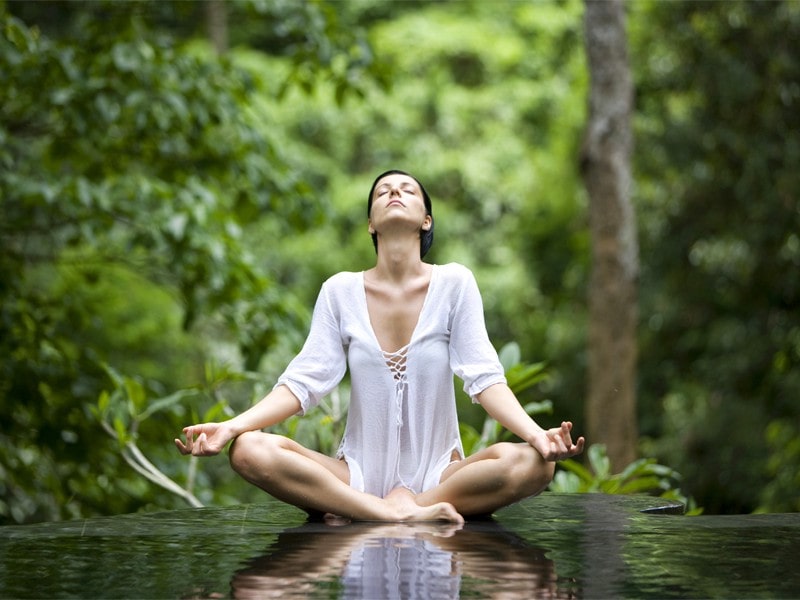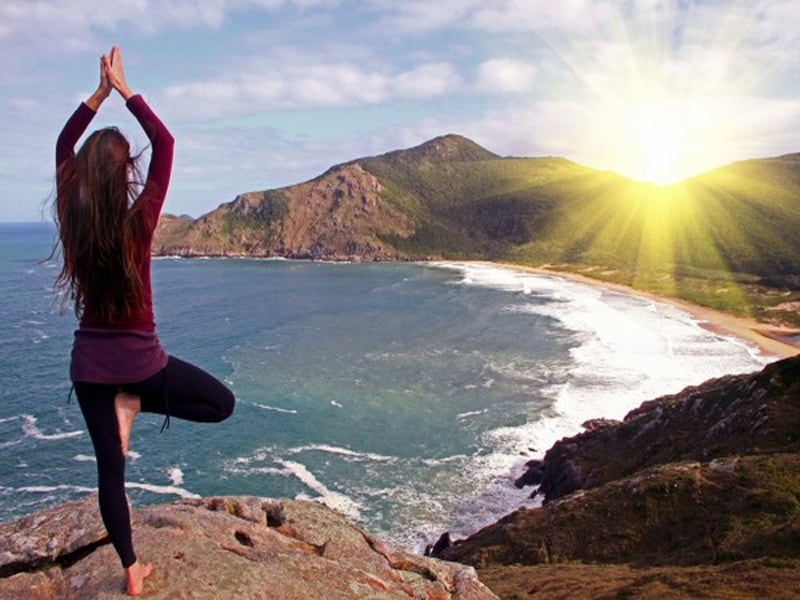How do you meditate in nature?

It is much easier for most people to meditate in nature than at home, for example. As it is summer, the theme of outdoor meditation is particularly relevant. I will give specific recommendations for outdoor meditation, but I want to start with a little digression.
That’s why I brought it up. Classes are held in nature. Next to the river and the forest. And during the lessons you can see how sensitive the children are to nature. They see a cuckoo in the forest, and enjoy a butterfly flying by. There’s no way they’ll miss a spider or a bug crawling along the rim in the arena and they’ll be delighted by the cat, who sometimes comes to visit us.
And what do adults do when they’re out in the open? Do we know how to be as sensitive to nature? How often, when we are busy thinking and doing things, we don’t notice the simple and important things: the air filled with the scent of herbs, the silence and tranquility of the forest, the murmuring of the brook, the beauty of the flower that grew on the edge and a million other important little things?
Now, let’s move on to specific instructions
It is a practice during which we learn to manage our attention, to fix it on the important, cutting off the unimportant. Read more about it here. In fact, the object of meditation can be anything: the flame of a burning candle, our own breath, the surrounding sounds, the pattern on the wallpaper. If you meditate in nature, it is best to fix attention on something natural.

There are an infinite number of options:
- the rustling of the leaves;
- the blade of grass swinging in the wind;
- scents;
- the sound of the sea or the murmur of the river;
- the feeling of the feet touching the warm sand;
- sensations in the body after a walk, etc.
It is important to remember that fixing attention on natural stimuli is a great opportunity to return to a state of inner harmony and balance. In nature, everything is harmonious. Tune in to nature, we return our body and our psyche to natural rhythms.
Feeling this, many people use music with natural sounds (birds singing, sea noise, etc.) to achieve a state of relaxation. Therefore, if you are in nature, do not miss the opportunity to tune in with it, using your attention.
Meditation in three stages
1.) Take a comfortable meditation pose. For five minutes, fix your attention on what you see right in front of you. Avoid any marks (e.g., “Oh, what a beautiful landscape!”, “What kind of plastic bottle floats on the river? Was it really hard not to litter?”). Just watch, staying in the neutral observer position.
2.) In the next five minutes, cover your eyes and fix your attention on the sounds around you. Just like in the previous step, take the neutral observer position without evaluating or engaging in any emotions.
3.) After that, for the next five minutes, fix attention on the physical sensations, on what is happening in the body. Prior to this, you were in tune with your surroundings and it is likely that your body has responded to some interesting sensations (relaxation, a burst of energy, etc.) Do not get involved and do not evaluate what you feel. Do not try to amplify the pleasant sensations or weaken the unpleasant ones. Just keep an eye on what you have.
Meditation on the move
You don’t have to sit still when you’re meditating. Fix your attention on yourself and the space around you as you move and do something. For example, if you are going somewhere, just slow down. Walk slowly, noticing how your body is moving and what it feels like to walk in your feet. Fix your attention on the physical sensations associated with walking.
Relaxation in nature
The technique I am about to talk about is not strictly a meditation. But it does help to relieve unnecessary tension and relax, and it is a good preparation for meditation in its classical form.
Tune in to your surroundings and imagine that pure natural energy is spilled everywhere around you. As a sponge, absorb this energy. Feel it coming into your body and spreading out inside as it fills each cell.
You can imagine that you breathe in this energy. When you breathe in, pure natural energy enters your lungs, and when you exhale, you direct it further, all over your body.
If there is some discomfort or unpleasant sensations inside, you can imagine how you exhale them. You can also imagine how the discomfort flows through the tips of your fingers and toes into the ground, or how the discomfort goes through the skin all over your body.
This exercise can have an infinite number of variations. For example, you can lie on the ground, feel its power and strength, imagining how fatigue and extra tension flow down into the ground. And you can also imagine yourself as a grass or a tree sucking up energy and nutrients from the earth.
Meditation is not an ideal state of nirvana. During meditation, your task is to be present in the moment “here and now”, not to aspire to pleasant feelings and not to run away from unpleasant feelings.
Be prepared for something unpleasant to face during your outdoor meditation: ants crawling on your body, mosquito bites, too cold or too hot, wet grass, cow cakes a meter away, etc. Whatever happens, learn not to get involved, not to run away from the unpleasant, and calmly and with interest fix attention on everything that happens.

